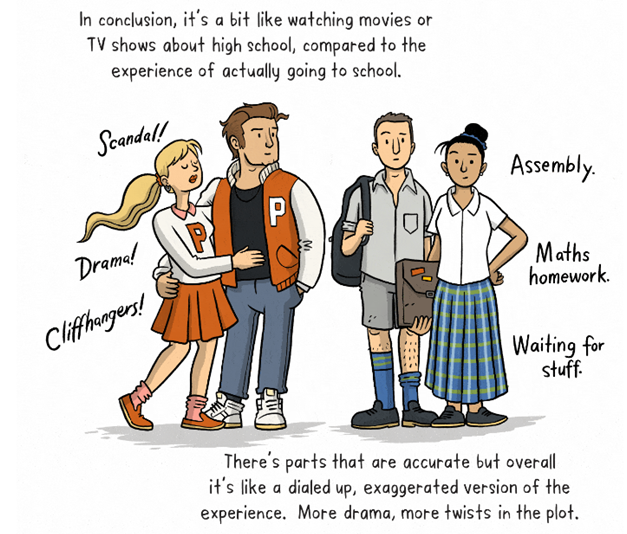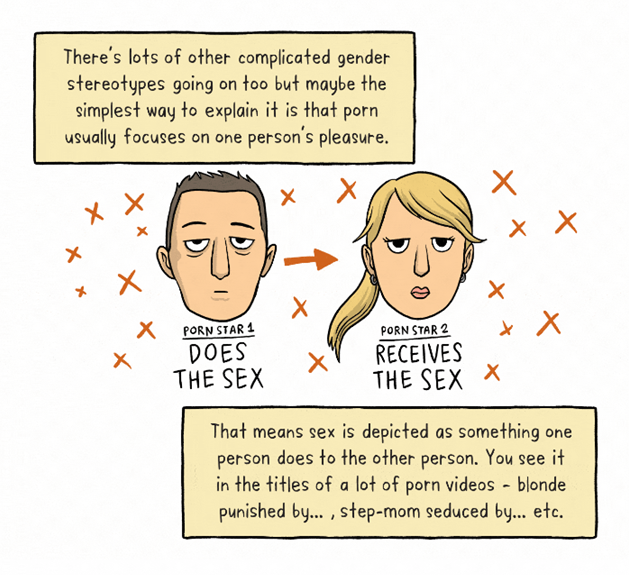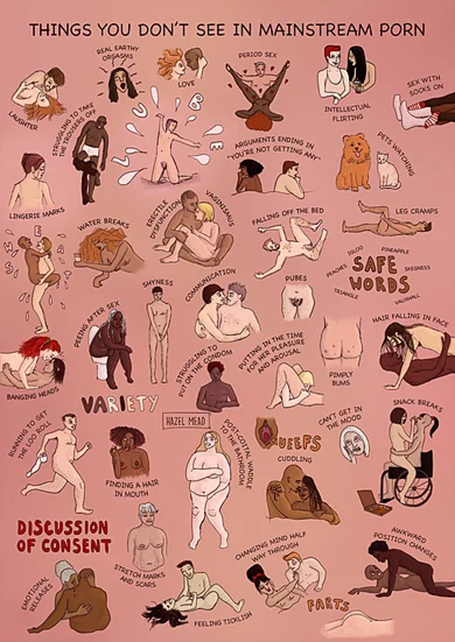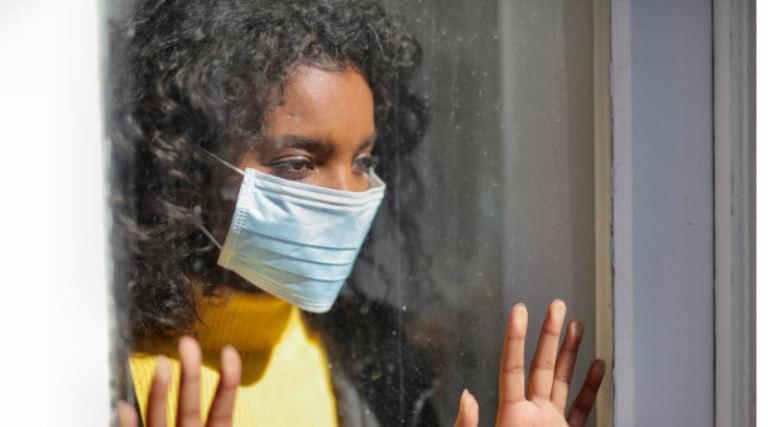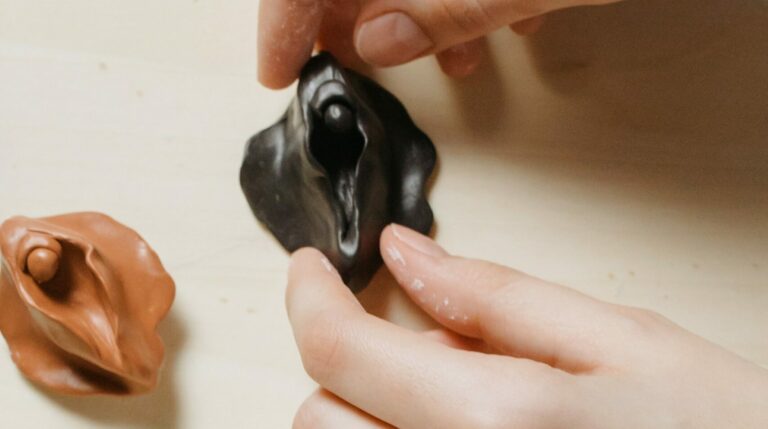Pornography
It’s very normal to feel curious about sex – but is it okay to watch pornography? Short answer: it depends!
Pornography impacts everyone, in one way or another. Yet it’s still very taboo topic and not spoken about freely. Instead of categorising porn as inherently negative and refusing to acknowledge it, we need to be talking about it and thinking about the healthy and unhealthy ways it affects our lives.
So what is pornography?
Pornography (porn) is explicit content that shows sex and is created to make the person reading/watching sexually aroused, excited and ‘turned on’. This content could be photos, videos or writing (erotic literature). Nowadays most porn is viewed online, rather than as printed photos in magazines, and we’ll mostly focus on online porn here. It can be viewed on online platforms and websites dedicated to showing porn and owned by large companies, on social media platforms and through website pop-ups.
But the definition of porn can be more fluid and broad than we may realise. It’s easy, and very common, to think of porn as the more hardcore, mainstream videos online, that are mostly free. But books and magazines can be porn too. Revealing social media pictures or adverts for underwear can also feel porn-like or ‘pornified’.
Defining porn can often just be that feeling of ‘I know it when I see it’. For example, understanding the subtle differences between a sex scene in a TV show and a porn video.
There’s lots of support available if you’ve seen something confusing or shocking (whether that’s by accident or not). If that’s the case, you can go straight to our section below: Getting help.
What about the law?
It’s legal to watch or buy porn in the UK, as long as it doesn’t show ‘extreme pornographic acts’, such as:
- people who are under 18
- life threatening violence, including acts that would probably cause serious injury to a person’s genitals, breasts or anus
- rape or sexual assault
- animals (known as bestiality)
- dead people (known as necrophilia)
This is the case for anyone regardless of age. It is legal for someone under 18 to watch porn, but it is illegal to:
- show porn to someone under 18, even if it’s a young person (under 18) showing it
- sell porn to someone under 18, even if it’s a young person (under 18) who is selling it
Porn is specifically made for adults (18+). It is not created for children or young people under 18, and we’ll explain why that’s important to bear in mind below. That said, it’s relatively easy for young people to access either intentionally or by accident.
It’s important to note: sexual photos and videos of people under 18 are not pornography. This is abuse, and more specifically could be image-based sexual abuse (revenge porn). If you see a sexual image or video of someone under 18, you can report it anonymously and it’ll be taken down.
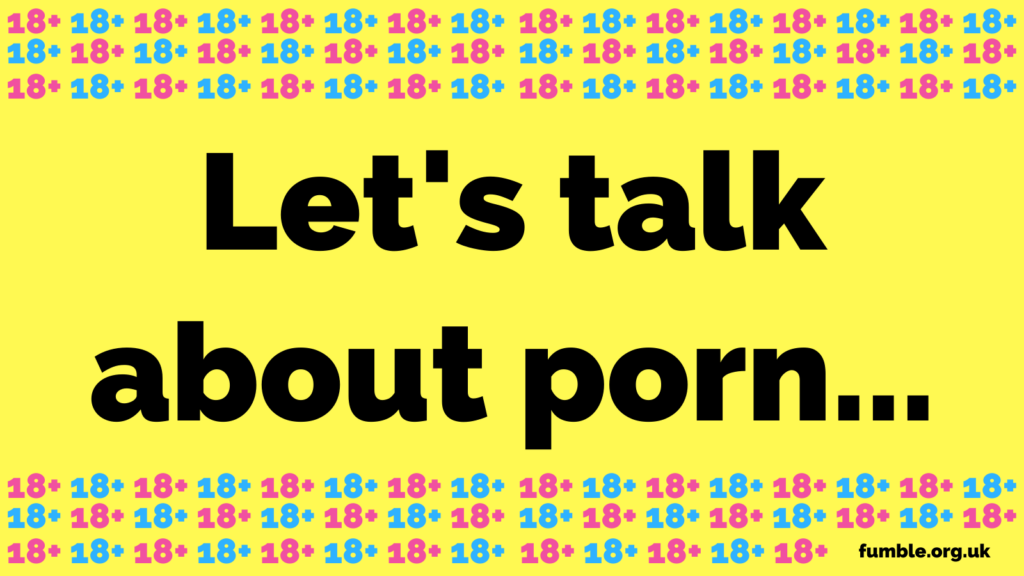
So, is it okay to watch porn?
There are lots of reasons people may watch porn:
- to get turned on while masturbating
- to enjoy while having sex
- out of curiosity
- to discover new things about their sexuality and sex
- to show off or have a laugh with friends
- feeling/being pressured by friends or partners
- by accident!
It’s really common to come across porn by accident on the internet, maybe through a pop-up, or by searching a sexual word and trying to find factual information. Another way of accidentally seeing porn is by being sent unwanted links to porn or sexually explicit images/videos, or being added to group chats/social media pages. Check out our Sexting and sending nudes article for more guidance on this.
It’s tricky to give a definite answer about whether or not porn is ‘okay’ to watch, when porn covers so many different types of sexual content. Overall, it’s healthy and common to enjoy sexual content, and nothing to be ashamed about. It can be a fun way to think about what you like or don’t like when it comes to sexual intimacy. But it becomes a problem when mainstream porn (typically free videos showing more hardcore and violent content) forms an idea of what real-life sexual intimacy should look like. Porn is specifically made as entertainment for adults, and not as an educational ‘how-to’ guide for sex. Just as you wouldn’t learn how to drive from watching Fast and Furious, you shouldn’t be learning how to have sex by watching porn. Like films, porn is nothing like real life – it’s edited, staged and produced with actors who are professionals being paid to create content.
What exactly is the negative impact of porn?
If we’re basing real life sexual intimacy around porn, that means we’re assuming our own sexual intimacy:
- won’t include sexual consent check-ins
- won’t include conversations about contraception beforehand
- won’t need regular STI testing and conversations about our STI status
- will include most women and people with a vagina orgasming from penetrative sex (which we know is statistically unlikely)
- will expect above average penis sizes
- will be based on cisnormative and heteronormative ideas of sex (penetrative penis-in-vagina sex between cis women and cis men)
- will need specific body types
This is a problem! There’s a huge gap between ‘porn sex’ and ‘real sex’, which this comic shows. Let’s look at some of these points in a bit more detail.
Consent
Porn and consent is a weird one! Consent is actually very formal when it comes to making porn, with professional contracts for the actors, but none of this is usually shown on screen. It’s all behind the scenes, when actually ‘real sex’ needs consent check-ins, just checking if someone’s okay, or if it feels good. If you’re using porn to understand how to have sex, it can make consent feel clunky and hard to include, when it doesn’t have to be at all. It’s just about making sure everyone involved is having a good time.
Gender and sexuality
There are two main issues here:
- if you’re straight and cisgender, mainstream porn includes a tonne of complicated and unhealthy gender stereotypes
- if you’re not straight and/or cisgender, it’s hard to find mainstream LGBTQ+ porn that you can relate to
Note: ‘cisgender’ (or cis) refers to people whose gender identity matches the one they were assigned at birth. For example, a cis man is someone who was born with a penis and testicles, was assigned male at birth, and identifies as a man too. Cis is the opposite of trans.
Most mainstream porn is made for heterosexual (straight) male viewing. This means that it usually shows heterosexual sex between a cis man and woman, with the focus on typical male fantasies and little/no focus on female pleasure. For example, showing women orgasming from penetrative sex (when most women and people with a vulva can’t orgasm from penetration alone) and the man ejaculating being the ‘end’ of sex. Even when porn does show women orgasming, it’s often an exaggerated or unrealistic image of pleasure, mainly to turn on men rather than actually show what women would find pleasurable. More than that, mainstream porn often shows women in a degrading way. It can be aggressive, unclear whether the woman is actually enjoying it, and it can normalise violent sex.
Body image
Just like the film industry, porn doesn’t usually show a variety of real life body types. There’s a lot of focus on what ‘sex’ can look and sound like, and not enough attention on how it can feel (enjoyable, safe, fun!). It’s very likely that your body will be different from the actors in porn, and that is more than okay! It becomes an issue when we feel like our body has to look like the bodies we’re seeing in porn (and this goes for films and TV shows too). Or when we expect other people’s bodies to look a certain way. Porn can shape our expectations of what other people look like too.
Mainstream porn is usually limited to very slim women and very muscly men (again, with a heterosexual focus), as well as having specific body parts that are bigger/smaller than average. For example, having a bigger penis, having a vulva with tiny labia, having bigger breasts. It can also be misleading when it comes to performance. For example, ‘lasting’ a long time if you have a penis (not ejaculating), squirting if you have a vulva, being flexible enough to do all the wild positions on screen. Actually, showing sex on screen means that actors have to be in specific positions to show more of the action – this is also why actors often shave their pubes. There can be a lot of pressure to shave pubes, but they’re normal and healthy to have!
Safety – contraception and STIs
Like consent, porn has to include discussions about contraception and STI transmission, but that goes on behind the scenes rather than in the actual content. The content misses all the realities of ‘real sex’, like searching for condoms or lube, putting a condom on, asking the other person when they were last tested, pets coming into the room, bodies making funny noises, laughing, falling off the bed, getting sweaty and more. Hazel Mead has a fantastic graphic that shows lots more examples:
What about ‘ethical’ or ‘feminist’ porn?
You may have heard of ‘ethical’ or ‘feminist’ porn. This is an alternative to mainstream porn (free, and with all the issues we just described). Basically, ‘ethical’ or ‘feminist’ porn focuses on the actors’ wellbeing. It pays the actors and filmmakers, it treats actors with respect, and it often shows sex that is more realistic, including vulva-based pleasure, LGBTQ+ intimacy and diverse body types.
Okay, but how much is too much porn?
This is a tricky question to answer – there is no known point of ‘too much’! It depends on the person, how they’re using porn and the impact it’s having on them. If you find that it’s getting in the way of your daily life and interfering with your relationships, then that’s a sign it’s too much. For example, choosing to stay in and watch porn, instead of meeting friends or going to school/college. It’s also a bad sign if you stop enjoying porn, but you continue to watch it anyway. If you’re feeling upset or worried about your use of porn, pay attention to that.
As we’ve described above, there are many issues with mainstream porn. There’s a lot to be aware of! But knowing that porn is entertainment, not education, and being a ‘critical consumer’ can give you a healthier mindset when watching porn. Being a ‘critical consumer’ means that you don’t immediately believe what you see or read, and instead you form your own opinions, maybe after some research. In the case of watching porn, this specifically means not believing everything you see shows you how ‘real sex’ is or should be.
Getting help
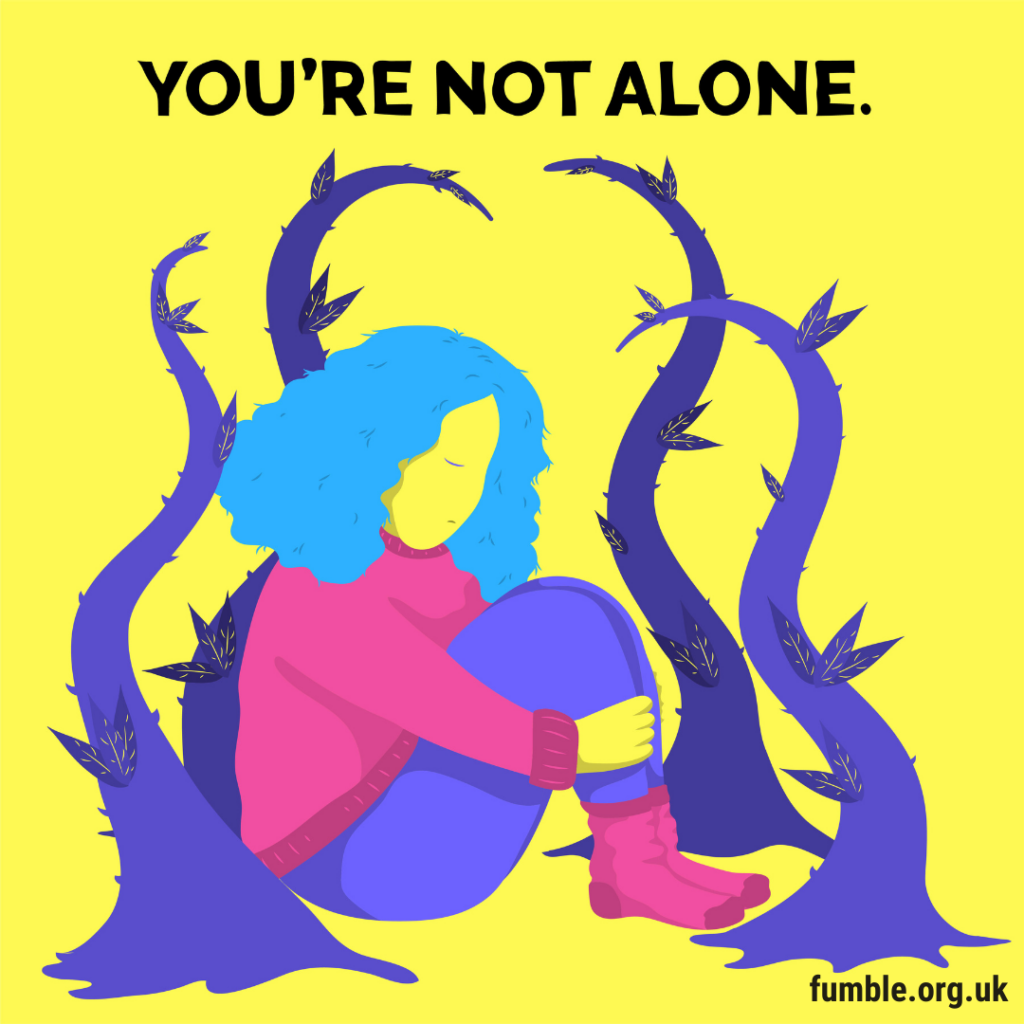
Whether you’ve seen something confusing or shocking (this could be by accident or not), or whether you’re worried about the impact of watching porn, there’s lots of available support. If you have seen porn, you’re not in the wrong. Seeing it can make us feel angry, upset, shocked, confused and many other negative feelings, and it’s important you have space to express that. Make sure you’re talking to people you trust. You don’t have to deal with your feelings alone.
It can sometimes feel difficult to talk to adults about this, like parents/carers and teachers. If that’s the case, there’s lots of support online. These organisations support young people in lots of different difficult situations and they’ll be able to help:
- Childline – a helpline and one-to-one counsellor chats to support you
- The Internet Watch Foundation – anonymously report any images online
- CEOP – make a report if you’ve experienced any online sexual abuse (including image abuse)
Other support
- Thinkuknow – Viewing pornography online
- Childline – Online porn
- Cosmopolitan – Is there such thing as porn addiction?
- Brook – Pornography and relationships
Read more
Last Reviewed 8 December 2022
Image Credit: Taras Chernus


